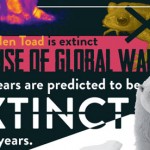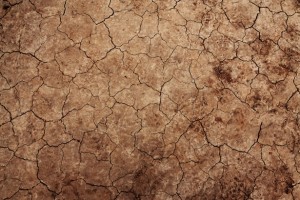 Check out this cool infographic talking about climate change and the impact it’s having on this planet. The thumbnail to the left is only a small portion, click on that for the full image.
Check out this cool infographic talking about climate change and the impact it’s having on this planet. The thumbnail to the left is only a small portion, click on that for the full image.
(via LivingGreen magazine)
A geek at the peak, in a world at the peak
 Check out this cool infographic talking about climate change and the impact it’s having on this planet. The thumbnail to the left is only a small portion, click on that for the full image.
Check out this cool infographic talking about climate change and the impact it’s having on this planet. The thumbnail to the left is only a small portion, click on that for the full image.
(via LivingGreen magazine)
2012 saw large increases in the amount of atmospheric CO2, with a jump of 2.67ppm (parts per million). As a comparison, between 2000 and 2010, the annual rate of increase was just under 2ppm; in the 1960s it was less than 1ppm. In spite of this data and political paralysis on the issue, scientists still talk as if we have some hope of averting catastrophic climate change on this planet. Let’s face it, the only way that will happen is if/when renewable energy becomes so much cheaper and more accessible to the average consumer that they’ll rush to embrace that. Until then, our greed and short-sightedness will keep us on this path. By the time the effects are so overwhelming that even the GOP has to pull their heads out of the sand and admit the problem, it’ll be too late to fix it.
Sorry, kids. Yes, we know exactly what our current course of action is doing to the environment you will rely upon when you’re our age. Or at least, we have a really, really good idea of what will happen, just some disagreement about the exact timing of things. Don’t let future history suggest otherwise. The people of this era are choosing this path for our own short term gain. I’m doing what I can to help influence others via this blog and my own actions, but it’s a really tough battle.
(via NBC news)
Scientists have identified exactly how it is that climate change may increase the likelihood of extreme weather events around the globe. You can read the full details here, but the gist of it is that there are normally what is, in essence, atmospheric ‘waves’ oscillating between the artic and tropic regions, which help mix things up. During recent extreme weather events, those waves were more or less frozen in place, something which climate change may make more likely as the planet is not heating uniformly (the poles heat more than the tropical areas, hence there’s less temperature different between them to drive the oscillations).
 Climate change is becoming more of a focus for me…we’re learning more and more, but also starting to see more effects of this. So, I’ll be posting summaries, like this one, of various climate change stories I find on the web, rather than posting them one at a time.
Climate change is becoming more of a focus for me…we’re learning more and more, but also starting to see more effects of this. So, I’ll be posting summaries, like this one, of various climate change stories I find on the web, rather than posting them one at a time.
First up, the latest National Climate Assessment, produced by more than 300 government scientists and outside experts, paints a bleak picture for this country. The report, still in draft form, predicts warming and more extreme weather events. Read more here.
A forthcoming report from the Intergovernmental Panel on Climate Change was leaked online (not due to be released until September of 2013 as it is not yet peer-reviewed), and paints a grim picture for our civilization…if we continue on our current path, warming will be ‘a catastrophic and unmanageable 10F over much of Earth’s habited and arable land.” The report also concludes that it is ‘virtually certain’ that human activities are responsible for this global warming. Read much more about this report here.
The World Bank is raising the red flag about global temperature increases above 4C (7F), saying that “we’re on track for a 4C warmer world marked by extreme heat waves, declining global food stocks, loss of ecosystems and biodiversity, and life-threatening sea level rise.” Food security is in doubt as temperatures rise, with crop yield reductions and extreme temperatures likely leading to shortages and hunger. What’s worse is that this 4C ‘danger zone’ is something that our current policies can’t even meet – we’ll overshoot that easily. Read more here.
The BBC reports that current CO2 emissions are too high to curb climate change, and are increasing, rather than decreasing as we need.
The Washington Post reports that, while there is a wide range of predictions from the various climate models, the National Center for Atmospheric Research is finding that warming is likely to be on the high side of predictions – not good, as it means we’ll substantially overshoot the target world leaders have agreed upon as the limit to avoid catastrophic consequences.
It’s basically all bleak news these days…but what makes it worse is that we have the technology and resources, right now, to make significant reductions in our CO2 emissions but we fail to act. Future generations will pay the price…and it doesn’t have to be this way.
Not surprisingly, 2012 was the hottest year ever (in recorded history, since 1895) in the continental US. The 53.3F average temperature was 3.2 degrees above the average for the 20th century, and one degree above the previous high set in 1998.
Also interesting was that, while there were 362 all-time record highs set across the country, there were zero all time record lows recorded. 2012 also ranked as the driest year since 1998, and with 61% of the continental US in moderate to exceptional drought.
Read more in the USA Today or Washington Post. And let’s hope for a more average 2013…and the political and social willpower to end this crazy terraforming project we’re on before it’s too late.
Proudly powered by WordPress | Theme: Baskerville 2 by Anders Noren.